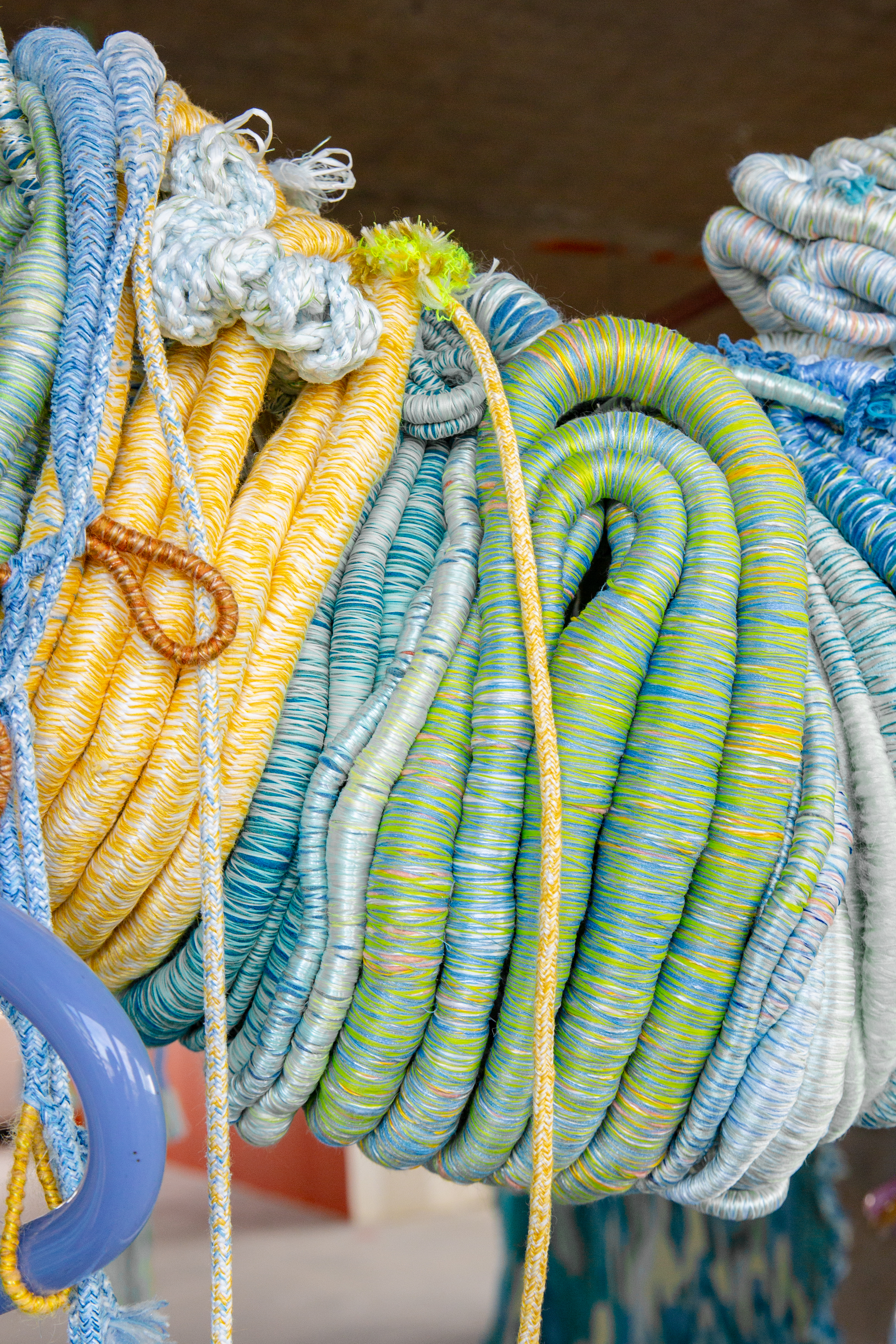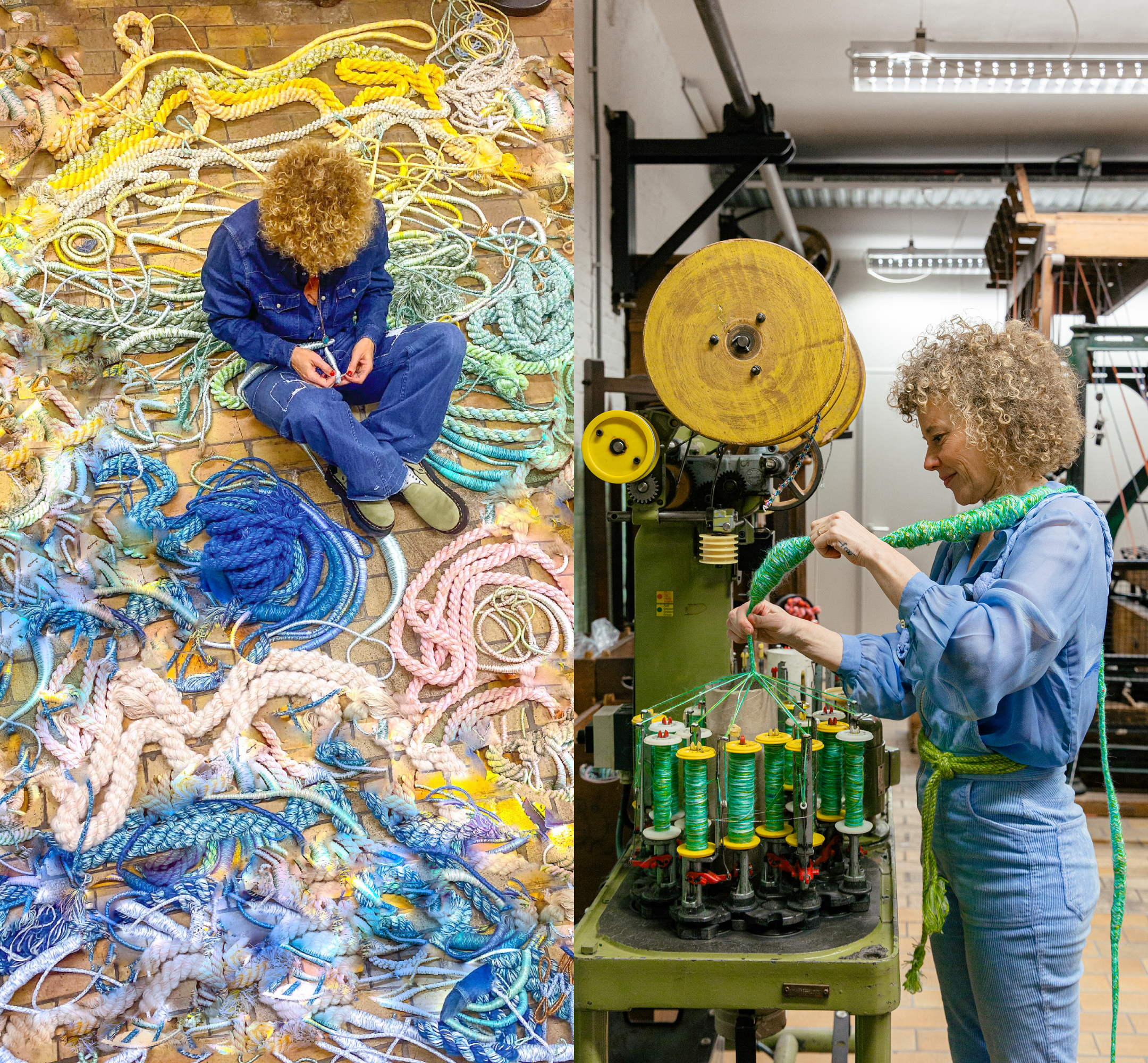
Sandra Keja Planken creates underwater world from leftover yarn | TextielLab goes green
14 October 2025
There are many ways to work with sustainable yarns. Do you opt for a ‘back to basics’ approach with home-grown flax, hemp or wool, cultivate biomaterials in a Petri dish, or choose recycled polyester? Sandra Keja Planken is exploring her own sustainable path: she has decided to work exclusively with leftover yarn.
Why produce new yarns when so many remnants are still on the shelf? Artist Sandra Keja Planken made that question central to the design process of Nature’s Visual Sound, an installation addressing the decline of marine life. In it, leftover yarn from the TextielLab and Wolkat stock grows into a fairytale-like underwater world. Keja Planken allows the collected deadstock of cotton, mohair, recycled PET yarns and wool to proliferate like corals, seaweed and seagrasses brought back to life.
This year, she worked in the lab’s trimmings and tufting department to expand her reef, incorporating numerous ‘loose ends’ by tufting, braiding, knotting and weaving them together – occasionally adding an old T-shirt of her own for good measure. Remnants of blown glass from the Glasmuseum Lab Leerdam were also integrated into the textile network.

Sandra Keja Planken at work in the trimmings department of the TextielLab. Photo by Bracket Studio
Touching is allowed
The sculptural elements – ‘Nani Knots’, ‘Hanging Pillars’, ‘Dripping Corals’, ‘Coralbutterflies’ and ‘Vesicularia Sculptures’ – enhance the tactile appeal of the textile reef, which Keja Planken describes as a counterpart to the flattened world of Flying Tiger. ‘We have lost our connection with nature and the matter of the world. That is why I think it is important to create tactile work that invites interaction,’ she explains. Visitors are therefore encouraged to touch the installation, something that was already possible at Amsterdam Art and BIG ART, where she exhibited in collaboration with Newhouse Gallery.
The recently created sections are made entirely from leftover yarn. Keja Planken says: ‘I no longer believe in producing new raw materials; there is already so much. I use what is left over from other productions – preferably recycled – and see what emerges.’
Nature's Visual Sound op BIG ART Amsterdam. Photo by Bracket Studio
Modelling with half cones
She recounts how she was given half cones of Wolkat yarn and then explored the bins of leftover yarn stored above the TextielLab. She selected what suited her composition, repeating the process midway through development. ‘Those leftover yarns keep piling up. When I started, there were five bins, but two more were added quite quickly.’
Extensive experimentation with the leftover spools yielded some pleasant surprises. Tufting with Wolkat’s brittle yarn caused it to fluff up, emphasising the transience of nature. Gradually, it became clear that the braiding machine could do more than expected. Keja Planken learned to sculpt with it, creating an irregular, organic look by layering different materials: ‘Working with leftover yarn doesn’t feel like a limitation at all. I think that’s ultimately the direction we all need to be heading.’
Coral breeding bed
Meanwhile, she is collaborating with researchers from Reef Renewal Bonaire and Resting Reef on the next stage. She aims to make her sculptures waterproof and allow them to function as breeding beds for new coral on the seabed. ‘A lot of art is made about nature; I want to create a healing environment. Art that actually helps nature to recover.’
